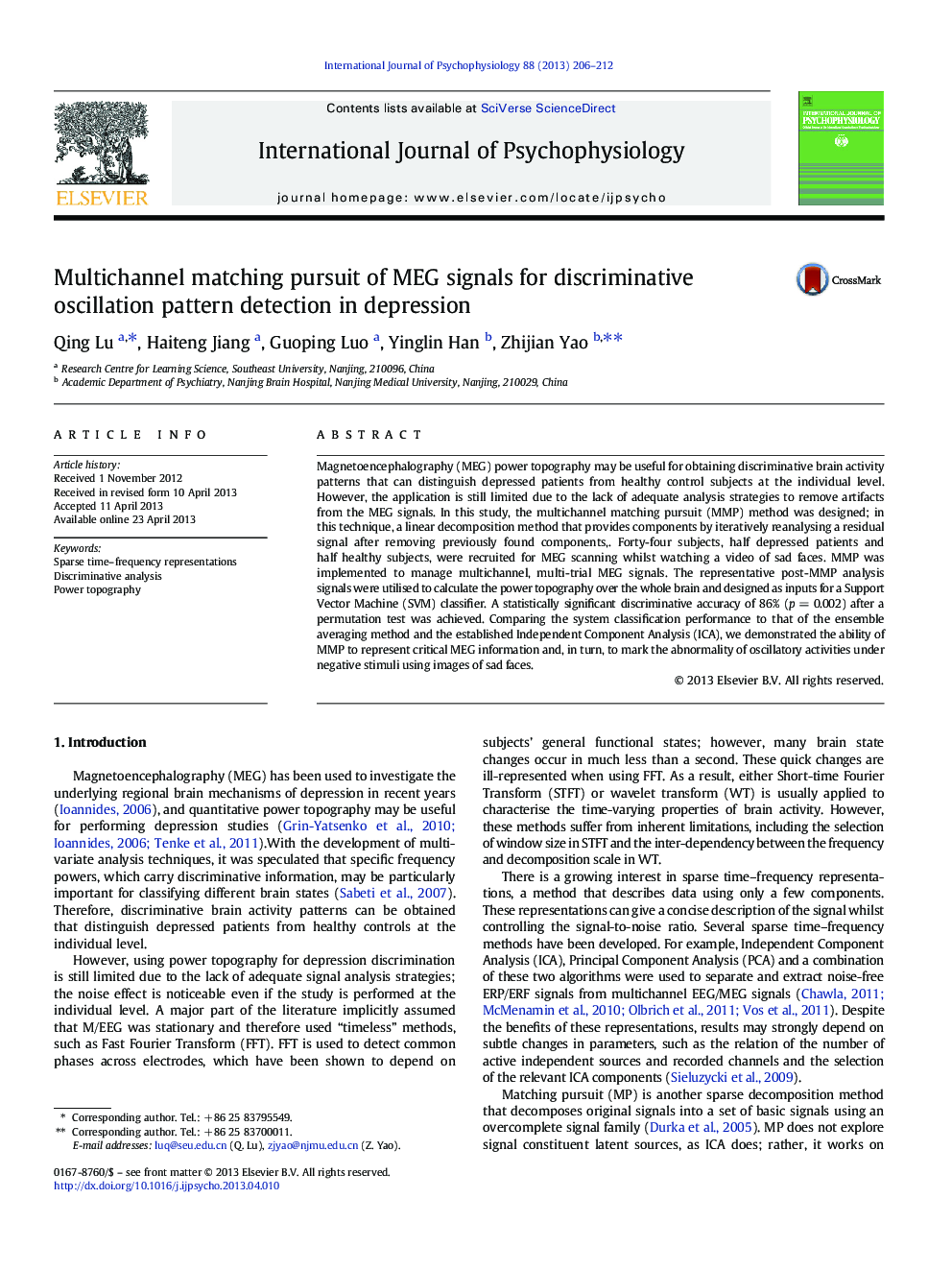| Article ID | Journal | Published Year | Pages | File Type |
|---|---|---|---|---|
| 929814 | International Journal of Psychophysiology | 2013 | 7 Pages |
•MEG band typographies are utilized to provide individual level discrimination.•Multichannel Matching Pursuit (MMP) method is used to extract critical MEG features.•The effect of MMP on characterizing MEG response is compared with that of ICA.
Magnetoencephalography (MEG) power topography may be useful for obtaining discriminative brain activity patterns that can distinguish depressed patients from healthy control subjects at the individual level. However, the application is still limited due to the lack of adequate analysis strategies to remove artifacts from the MEG signals. In this study, the multichannel matching pursuit (MMP) method was designed; in this technique, a linear decomposition method that provides components by iteratively reanalysing a residual signal after removing previously found components,. Forty-four subjects, half depressed patients and half healthy subjects, were recruited for MEG scanning whilst watching a video of sad faces. MMP was implemented to manage multichannel, multi-trial MEG signals. The representative post-MMP analysis signals were utilised to calculate the power topography over the whole brain and designed as inputs for a Support Vector Machine (SVM) classifier. A statistically significant discriminative accuracy of 86% (p = 0.002) after a permutation test was achieved. Comparing the system classification performance to that of the ensemble averaging method and the established Independent Component Analysis (ICA), we demonstrated the ability of MMP to represent critical MEG information and, in turn, to mark the abnormality of oscillatory activities under negative stimuli using images of sad faces.
